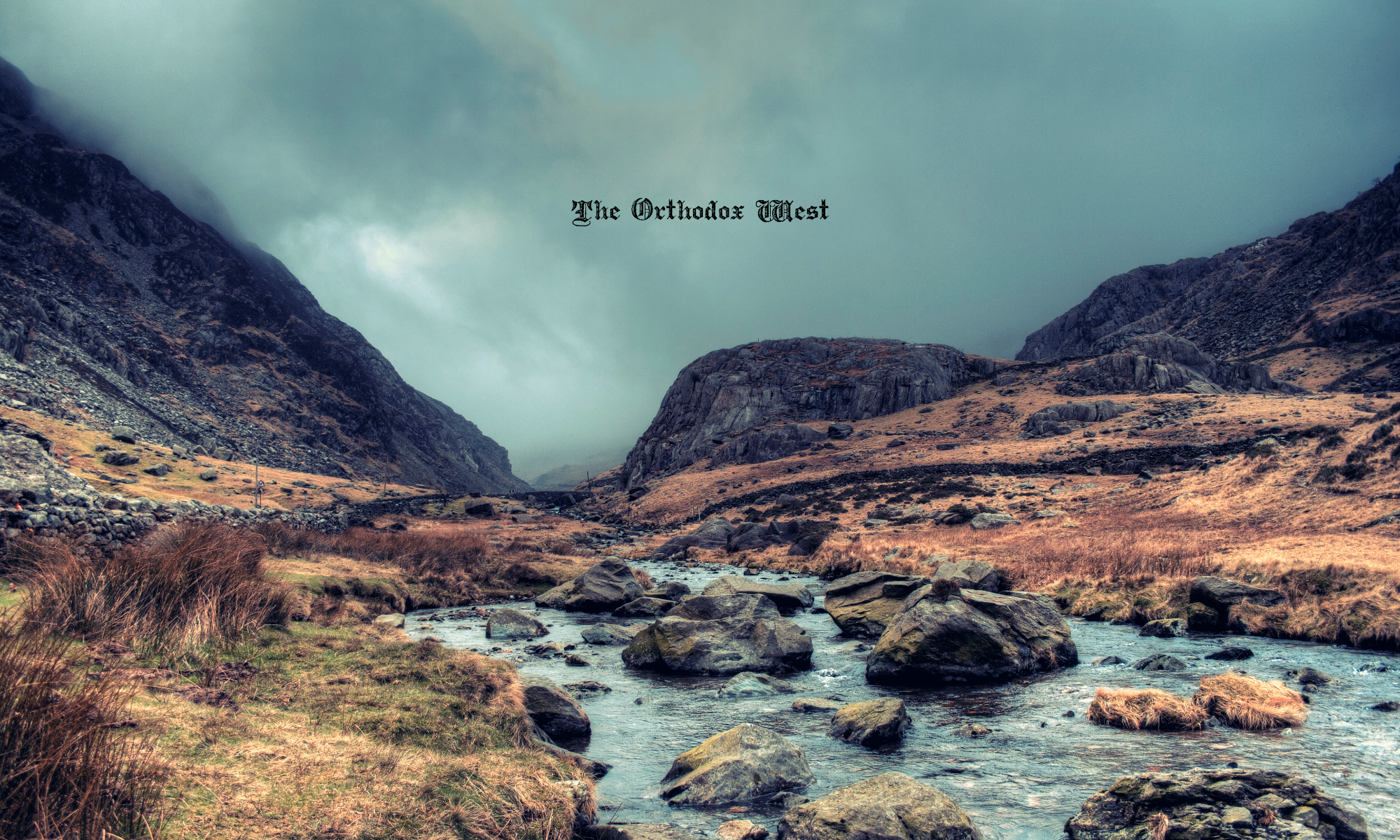[I am indebted to Fr. Patrick Henry Reardon for many of the remarks on the Revelation to John from his new book Revelation – a Liturgical Prophecy]
In Advent we look to the first and second comings of our Lord simultaneously. We look at past and future to shape our present – to fashion our way of life.
Our daily office readings reflect this perspective, as we read Genesis to look at our distant past, I Kings to reflect on the later monarchical history of Israel, Mark’s Gospel to focus on our Lord’s first coming to us, and the Revelation to John which looks both at his present and ahead to the end of the ages. In our Gospel for today, Jesus points to the future in the sort of language we associate with the Revelation – apocalyptic – unveiling.
We often think of the Revelation as pertaining only to the future, but it was written primarily for the present of the churches to which it was sent to prepare them for what was to come quickly – especially persecution by elements of the Roman state. It is essentially a prophetic call to repentance in the face of an impending trial. All of its scenes represent a summons to this repentance. The book is a long prophecy in the sense of a repeated warning; not a treasury of information about things to come in the distant future, but a very practical book, calling for a very practical response.
The traditional view is that the coming crisis envisaged in Revelation was the expected persecution of Christians toward the end of the reign of the Emperor Domitian (81-96AD). The earliest witness for this view was St. Irenaeus of Lyons, an immediate associate of Polycarp, the bishop of Smyrna, one of the Asian churches to which the book is addressed.
In order to prepare, what these churches needed chiefly to do was repent. The exhortation is presented as a work of liturgical prophecy with John “in the Spirit on the Lord’s Day”. He is facing East and just to the East of where he stands in prayer lies the western shore of Asia, where John in mystic vision beholds the ring of the seven churches.
Revelation describes worship at the heavenly throne of God, incessant worship in heaven which incorporates the worship of the Church on earth, with striking images of the union of the Church praying on earth with the Church praying in heaven, in the figures of the 4 and 20 priestly elders, and the Martyrs.
This is the perspective we should have as we read through this Revelation of Jesus Christ which He gave to John – a liturgical prophecy of exhortation to repentance – not an esoteric treatise about the final times of history.
Thus our three perspectives – past in terms of our original creation; the future in terms of what may come to us as faithful witnesses (martyrs) of Jesus, and is even now coming to innumerable brethren in Christ around the world; the present in which we are to prepare to be ready by repentance- turning our attention, desire and will on God, through worship, prayer, reading and hearing His Holy Scriptures and receiving the benefits of His sacrifice for the life of the world, esp in the Holy Communion.
We have been given the time as the Church Militant here on earth now to reflect on our union with the Church Triumphant and the Church Expectant. It is on the Lord’s Day, as the Letter to the Hebrews says, that we gather to draw nigh:
to Mount Zion and to the city of the living God, the heavenly Jerusalem, to an innumerable company of angels, to the general assembly and church of the firstborn who are registered in heaven, to God the judge of all, to the spirits of just men made perfect, to Jesus the mediator of the new covenant, and to the blood of sprinkling that speaks better things than that of Abel.
All of these components are described in the Book of Revelation, which is why it pronounces a blessing at the beginning on “he who reads aloud the words of this prophecy, and those who hear, and who keep what is written therein, for the time is near”; and at the end on “he who keeps the words of the prophecy of this book.”
Revelation brings us deeply into the primary theme of Advent – preparation. We are not only preparing for our Lord’s coming, but for everything that ensues between His first and second advents. We are preparing to meet whatever may confront us – whether the darkness of our own sin, the cooling of our love and fervor for the life of discipleship, the testing of our faith by the trials of life, or the fiery trial of persecution, for which we in America are in need of much preparation, as we have yet to be tried thus.
The preparation for all is the same – repentance – returning to God, in thought, word and deed. Without our union with Him, we are lost – cast adrift in the maelstrom of our own inner chaos, and the deceitful allurements of the world and the devil, which seek to cause our hearts to turn the other way – away from God, which will cause them to fail us for fear when our lives are shaken.
The Church is both a refuge and a boot camp…a sanctuary of peace and healing, and a training ground for the confrontations that we encounter. We should never forget that balance, and ever avail ourselves of her bounty which will prepare us for all that may come – all that will come.

